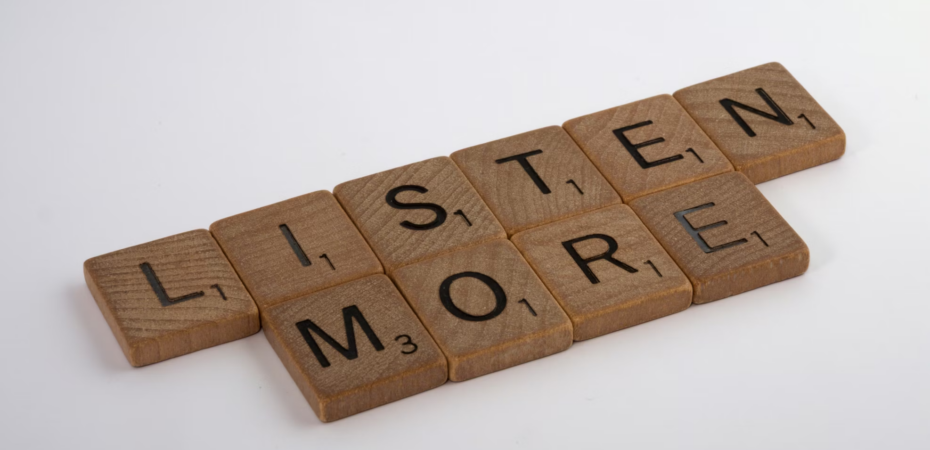We live in the world of noise. Most of us dislike being in silence, playing videos, music, and podcasts, even when a little quiet would have benefited us. We bring the same attitude into our communication, too. We associate talking with a monologue, whereas it’s a two-way street. Today, listening is a skill we should learn — being here, with those we share the moment with, and listening to them, because there is a difference between hearing someone and listening to them.
Let’s explore how to deepen our presence in every conversation and boost the quality of relationships with those around us.
Why Hearing Isn’t the Same as Listening
“Why would I learn something I already know?” you might ask. “I hear people around me and pay attention during the dialogue. It’s only a problem for people who want to know how to manage ADHD or who tend to get too involved in their jobs or studying.”
While it might be technically accurate, hearing isn’t the same as listening. And the lack of this skill is common in all populations, whether you have ADHD or not. We can hear noises and barely notice them. But when we listen to something or someone, it becomes an act of active participation.
Hearing is physiological; it happens as long as our ears function. We don’t invest any effort in it; you can hear the noises and sounds even when you don’t notice them.
In contrast, listening requires attention and perception of the sounds. When talking to others, this means not just going through the motions of hearing them but trying to understand and connect with them.
The Meaning of Presence
Now, what is presence in communication, and what does it stand for? It’s not just about not-dissociating during the dialogue (because, let’s be real, we all do that sometimes) but emotionally and psychologically engaging. True presence means offering full attention without distractions, judgment, or internal noise.
When you are present, you don’t think about what you plan to say next, how long the conversation takes, or who is texting you. All of your focus remains on this person in front of you, not just because you have to, but because you value them as individuals.
Here are the reasons to be present in your communication:
- Your relationships significantly improve
- You learn more about the people around you
- You become more introspective
- You gain a crucial skill in all areas of life, including professional
- Your emotional intelligence and empathy grow
- You avoid most conflicts and miscommunication.
Rebooting Your Listening Skills
The best thing about switching to a new approach is that you can learn it. Here are some practical and simple tips to train your presence in conversations.
Put Distractions Away
We all get inattentive sometimes; it’s totally okay. Just make sure you put distracting thoughts and factors away before you start talking to someone. Even if you think you can focus on the other person, they might struggle with talking to you if, for example, you’ve got the TV blaring just behind you.
- Put your phone on silent
- Turn away from things that are bright or loud
- Close unfinished things or open tabs on your computer or phone
- Set a personal boundary: “I am interested in what is happening now.”
This intention will bring your focus to what matters.
Try Mindful Pausing
Are you the kind of person who tends to feel uncomfortable during the pauses? Sure, it can be a great skill to stop an awkward moment, but in our race for a quick solution, we might become too focused on the rhythm of the conversation instead of the conversation itself. As noted in the muscleandfitness blog, before responding in a conversation, pause. Breathe and process what was happening just now. Ask yourself: “Did I understand what was just said?” You can replay some phrases in your head. This pause creates space for the words you’ve heard to settle in and shows that you respect the other person.
Engage With Your Body Language
No, we don’t mean you should learn new gestures or pretend — but there’s much our body can say that we underestimate. For instance, do you feel listened to when the other person responds to your words verbally but looks away or, worse yet, taps on their phone? Probably not.
Sometimes, raise your eyes and gaze at the person (yeah, staring into someone’s eyes all the time might be an overkill). If it feels natural, nod, smile, shrug, or do something else. Avoid looking away all the time or seeming focused on something else.
Reflect and Inquire
One of the most powerful active listening tools is reflecting on what you’ve heard. It shows you care and checks your understanding.

If you do this all the time, it might feel a bit weird, so treat this as a process during which you listen, analyze, reflect, and then give your interpretation. Use phrases like “It sounds like…” and “Do I have that right?” This practice is so valuable because the person you’re reflecting back to will feel heard.

Don’t Fix It
If the dialogue concerns an unpleasant topic — let’s say, your friend shares a problematic story about her breakup — don’t jump to solve the issue. Ask the person if they’d rather listen to some ideas for a solution or just vent. Once they choose, go with that strategy.
How to say it diplomatically, though? You can try phrases like “Do you want advice, or would you rather I listen for now?” Let them talk without rushing to respond and just be there.
Listening With Intention
Listening to others might be one of the hardest skills you’ll master. It’s truly unique and takes a lot of patience and effort. You won’t get it all perfect on the first time, and on the tenth one, either. However, it’s one of the greatest gifts you can give to yourself, because the trust we earn is a treasure in itself.


 By
By 




